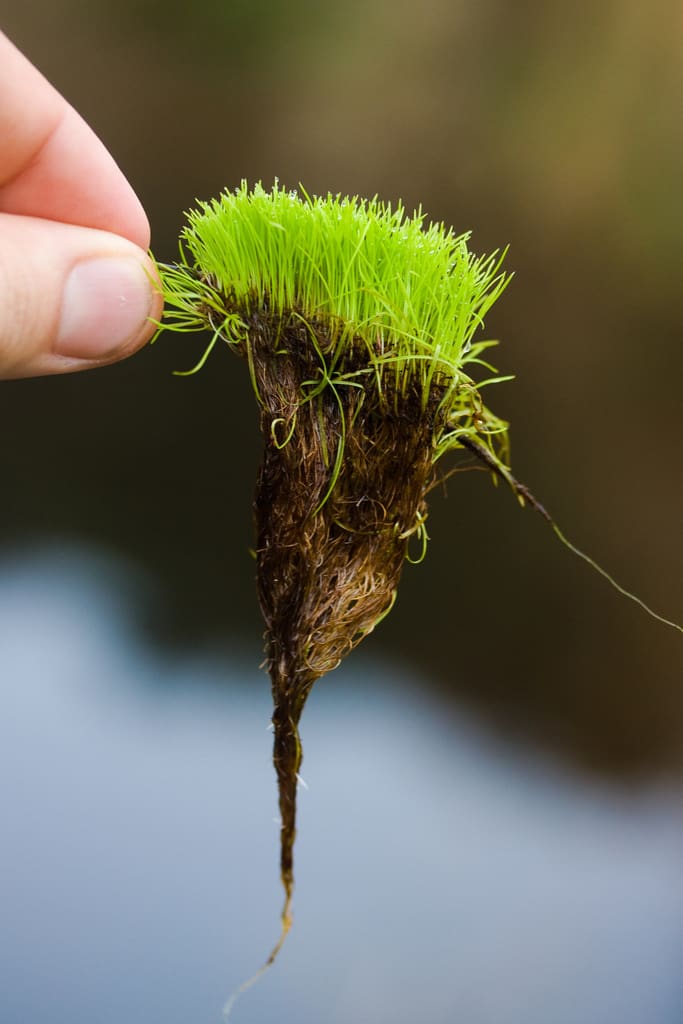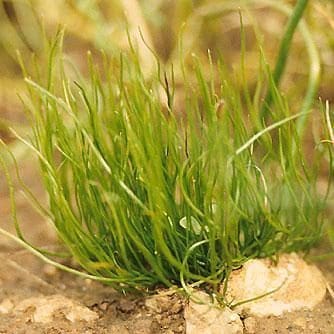Navigating through the diverse world of aquatic plants, you might come across an intriguing species known as the American Pillwort. Perhaps you’ve heard the name and a fleeting curiosity nudges you to explore. This short, engaging read will sate your curiosity by offering a concise, comprehensive understanding of this aquatic marvel. By the end, your knowledge of the American Pillwort will be significantly deepened thanks to the exploration of its botanical characteristics, habitat preferences, and its intriguing role in the ecological system.
Identification of American Pillwort
The first step in studying any species is its identification. Your understanding of the American Pillwort, commonly known as Pillularia americana, starts with learning its key characteristics.
Characteristics of American Pillwort
The American Pillwort exhibits unique features that set it apart from other aquatic plants. It has slender, grass-like leaves that are typically green to brownish-green. The leaves are about 1-6 inches long. The root system is fibrous, from which rhizomes (underground stems) grow and spread out, forming dense clusters.
Visual Description of the Plant
Efficiently identifying American Pillwort necessitates a detailed visual description. It has an unassuming appearance, easily mistaken for common grass due to its slender and short leaves. Another distinguishing feature is that the sporocarps (spore-carrying structures), about 3-5 mm long, are borne on separate stalks at or below the soil level.
Common Locations to Find American Pillwort
If you are wondering where you can spot American Pillwort, then you should remember that it is predominantly found in wetlands. From freshwater to slightly brackish water bodies, sandbars, shores of ponds and lakes, to the edges of slow-moving streams and rivers – it thrives best in sunny and moist conditions.
Taxonomy of American Pillwort
A comprehensive study of American Pillwort is incomplete without delving into its taxonomy, which encompasses its scientific classification, and etymology.
Scientific Classification
In the scientific categorization of life, American Pillwort comes under the Plantae kingdom in the Tracheophyta division. Its rank in class is Equisetopsida, and it finds a place in the order of Salvinales. The family it belongs to is termed Marsileaceae, and the Pillwort falls under the genus Pillularia. Essentially, its binomial name is Pillularia americana.
Etymology and Naming History
Although the origin of the name ‘Pillwort’ remains somewhat obscure, it is worth noting that ‘wort’ encapsulates the old English term for plant. Meanwhile, ‘pillu’ seems to represent the Latin root for ‘ball’, hinting towards the globular shape of the sporocarps.

Ecology and Habitat of American Pillwort
Understanding the ecology and habitat of American Pillwort offers an in-depth view of the conditions favoring its growth, typical habitats, and its geographic distribution.
Preferred Water Conditions
While American Pillwort can survive a range of water conditions, it prefers freshwater environments with a neutral to slightly acidic pH. It also favors muddy or sandy substrates flooded with water, particularly during its active growing phase in the warmer months.
Common Habitat Types
American Pillwort thrives in freshwater ecosystems, particularly in marshes, swamps, and wet prairies. It is fond of areas where the water is relatively shallow but is occasionally found in deeper water bodies.
Geographic Distribution
Geographically, American Pillwort is largely distributed across North America, showing a notable presence in regions like the Midwestern US, as well as the southeastern part of the country. Collectively, the American Pillwort adds unique biodiversity to the aquatic flora of these regions.
Life Cycle of American Pillwort
Learning about the life cycle of American Pillwort gives ample insight into its natural growth rate, seasonal changes and how it reproduces.
Growth Rate and Stages
The growth rate of American Pillwort highly depends on the environmental conditions it experiences, but it generally maintains a moderate pace. The plant starts its cycle as a spore, which, once germinated, develops into a prothallus. This small, green, heart-shaped structure then matures into a full-grown plant via the process of fertilization.
Seasonal Changes in Appearance
Changes in appearance of the American Pillwort across seasons are mostly related to fluctuating water levels. When water decreases during drier periods, the plant’s presence is manifested predominantly as brown-and-green clusters of thread-like leaves barely visible above the mud. However, in times of flooding or rise in water level, the plant expands its growth and appears as a submersed plant with slim stem-like leaves protruding from the water.

Reproduction of American Pillwort
Understanding the reproductive behavior of American Pillwort involves the exploration of its spore formation, the interplay of sexual and asexual reproduction, and the ideal conditions for its reproduction.
Spore formation and Dispersal
The American Pillwort primarily reproduces through spore formation. Its sporocarps, once mature, crack open to release the spores which then get dispersed through water currents or via animals. On landing on suitable substrate, these spores then germinate, leading to the formation of new plants.
Sexual versus Asexual reproduction
Just like most ferns, American Pillwort also follows both sexual and asexual methods of reproduction. The spore production is part of sexual reproduction, also termed sporogenesis. Asexual reproduction, or vegetative reproduction, occurs when a new plant emerges from the rhizomes.
Ideal Conditions for Reproduction
Ideal conditions for the reproduction of American Pillwort align with its preferred growth conditions. This includes a wet climate, the presence of muddy or sandy substrate, and constant sunlight exposure.
Role in Ecosystem
American Pillwort, with its ability to thrive in different aquatic ecosystems, plays a significant role in contributing positively to these environments.
Interactions with Wildlife
In terms of interactions with wildlife, American Pillwort acts as a source of cover and food for aquatic invertebrates. A few bird species have also been observed to feed on the sporocarps of the plant.
Contribution to Water Quality
American Pillwort enhances water quality by stabilizing the soil and reducing the stream velocity, thereby lessening sediment loads. Its ability to filter excess nutrients also helps in maintaining a clean water environment.
Role in Aquatic Food Chain
To complete the aquatic food chain, American Pillwort is an essential bio link. It provides nourishment for herbivorous aquatic wildlife, which are consequently predated by carnivorous species, aiding in establishing a balanced ecosystem.

Cultivation of American Pillwort
American Pillwort can also be bred artificially. Essential aspects of its cultivation encompass propagation methods, caring guidelines, and potential challenges involved in the process.
Propagation Methods
American Pillwort can be propagated through both spores and rhizomes. Depending on the route chosen, the propagation conditions replicate that of the plant’s natural reproduction processes.
Caring for the Plant in a Home Aquarium
The Pillwort requires intense light but can survive a wide span of water conditions. It should be trimmed regularly to avoid excessive growth, to maintain an optimum pH level, and the substrate should be rich in nutrients.
Challenges in Cultivation
The primary obstacle faced in the cultivation of American Pillwort is its slow growth rate. It requires poor lighting to start, but can eventually withstand stronger lights. Additionally, maintaining the right balance of nutrients can at times become challenging, as any kind of imbalance may inhibit the plant’s growth.
Culinary and Medicinal Uses
Though not as popular as other herbs, the American Pillwort has potential health benefits and even culinary applications.
Potential Health Benefits
As a rich source of antioxidants and mineral nutrients, the American Pillwort provides health benefits that include boosting the immune system and aiding digestion.
Traditional Uses in Herbal Medicine
In folk medicine, American Pillwort has been traditionally utilized for healing wounds due to its anti-inflammatory properties. It was also used to treat various ailments like depression and anxiety.
Culinary Applications
American Pillwort can be used to add a unique flavor and nutritional boost to meals. Its leaves can be cooked or eaten fresh in salads, while the sporocarps are ground into flour as a gluten-free alternative.

Conservation Status and Threats
The conservation status of American Pillwort and the threats it faces are significant aspects to understand, given their implications for biodiversity and ecological balance.
Current Conservation Status
While the conservation status of American Pillwort varies regionally, it is generally considered to be of least concern.
Threats and Challenges to Survival
The survival of the American Pillwort is predominantly threatened by habitat destruction due to human activities like agriculture and urban development. Water pollution and invasive species are additional threats.
Efforts to Protect American Pillwort
Current conservation efforts aim at preserving the natural habitats of the American Pillwort. This includes putting regulations in place to minimize habitat destruction, and conducting ongoing research to understand and address the plant’s population dynamics.
Research and Studies on American Pillwort
Significant research and studies carried out on the American Pillwort have contributed immensely to our understanding of this species, and they pave the way for future research directions.
Recent Scientific Findings
Recent studies on American Pillwort include extensive research into its ecological requirements, reproductive behavior, and its role in aquatic ecosystems. These have not only broadened our knowledge of the plant but also opened avenues for its potential use in different fields.
Future Directions for Research
Potential areas for future study include exploring its capacity for phytoremediation, assessing its nutritional profile for dietary applications, and investigating the usability of the plant for wastewater treatment given its water purifying properties.
Importance of American Pillwort in Scientific Study
The American Pillwort is, indeed, a remarkable organism for scientific study, both for its unique characteristics and its role in the ecosystem. Its ability to thrive in various aquatic habitats and reproduce in different ways offers valuable insights into plant ecology and evolution. Additionally, its potential health and environmental benefits enhance its importance in scientific research, making it a significant species for continual study.
